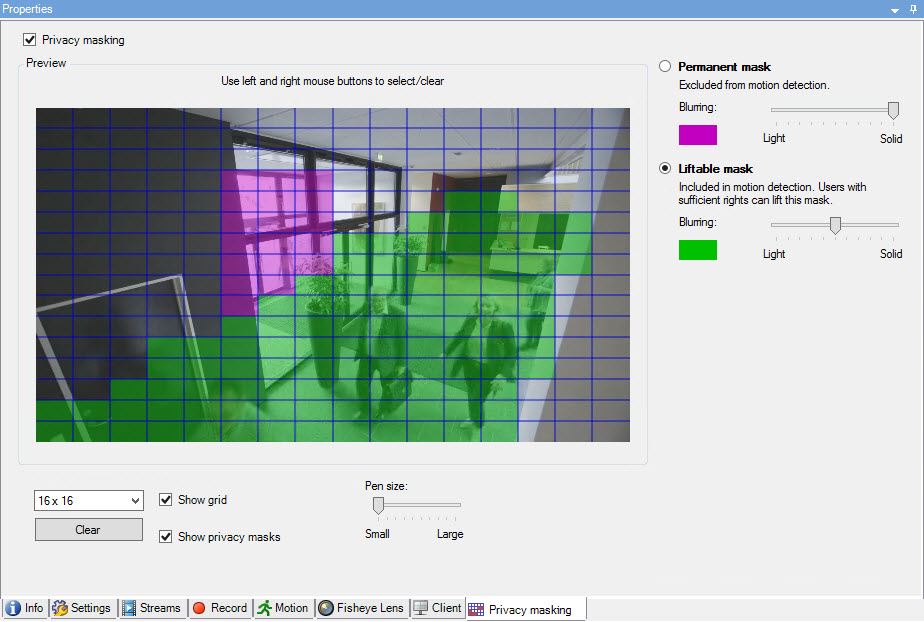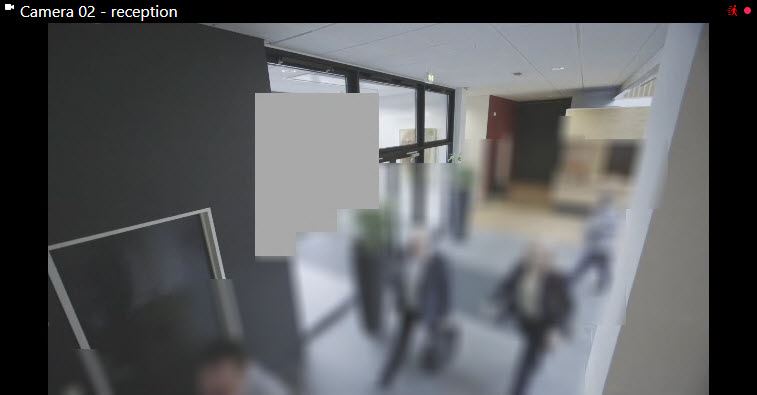
With privacy masking, you can define which areas of the video from a camera you want to cover with privacy masks when shown in the clients. For example, if a surveillance camera covers a street, you can cover certain areas of a building (could be windows and doors) with privacy masks, to protect the privacy of residents. In some countries, this is a legal requirement.
You can specify privacy masks as either solid or blurred. The masks cover both live, recorded, and exported video.
There are two types of privacy masks:
Note: If you upgrade from a 2017 R3 system or older with privacy masks applied, the masks will be converted to liftable masks.
When a user exports or playbacks recorded video from a client, the video includes the privacy masks configured at the time of recording, even if you have changed or removed the privacy masks later. If privacy protection is lifted when exporting, the exported video does not include the liftable privacy masks.
Important: If you change privacy masking settings very often, for example once a week, your system can potentially be overloaded.
Example of the Privacy masking tab with privacy masks configured:

And this is how they appear in the clients:

Note: You can inform the client users about the settings of permanent and liftable privacy masks.
© 2018 Milestone Systems A/S